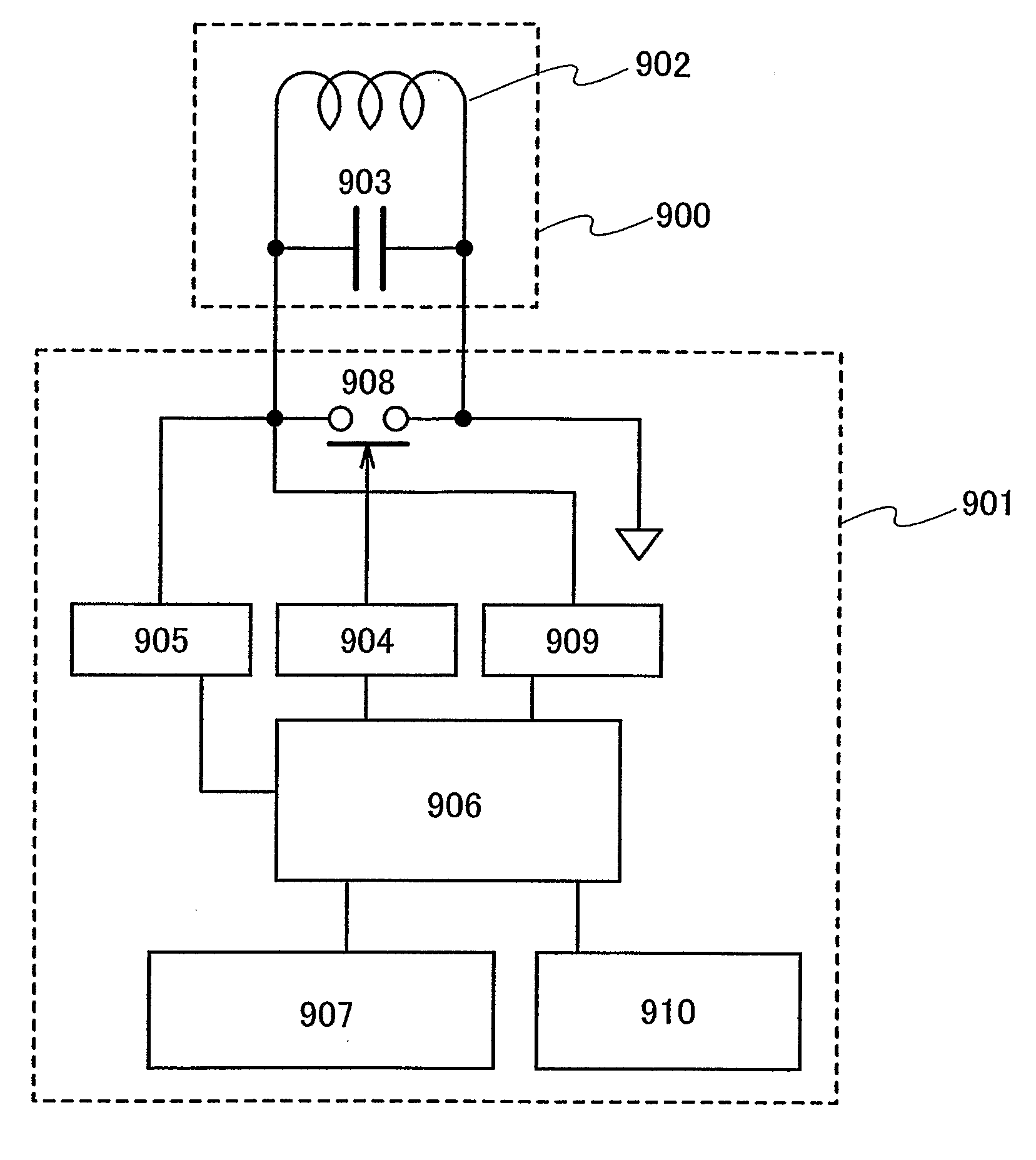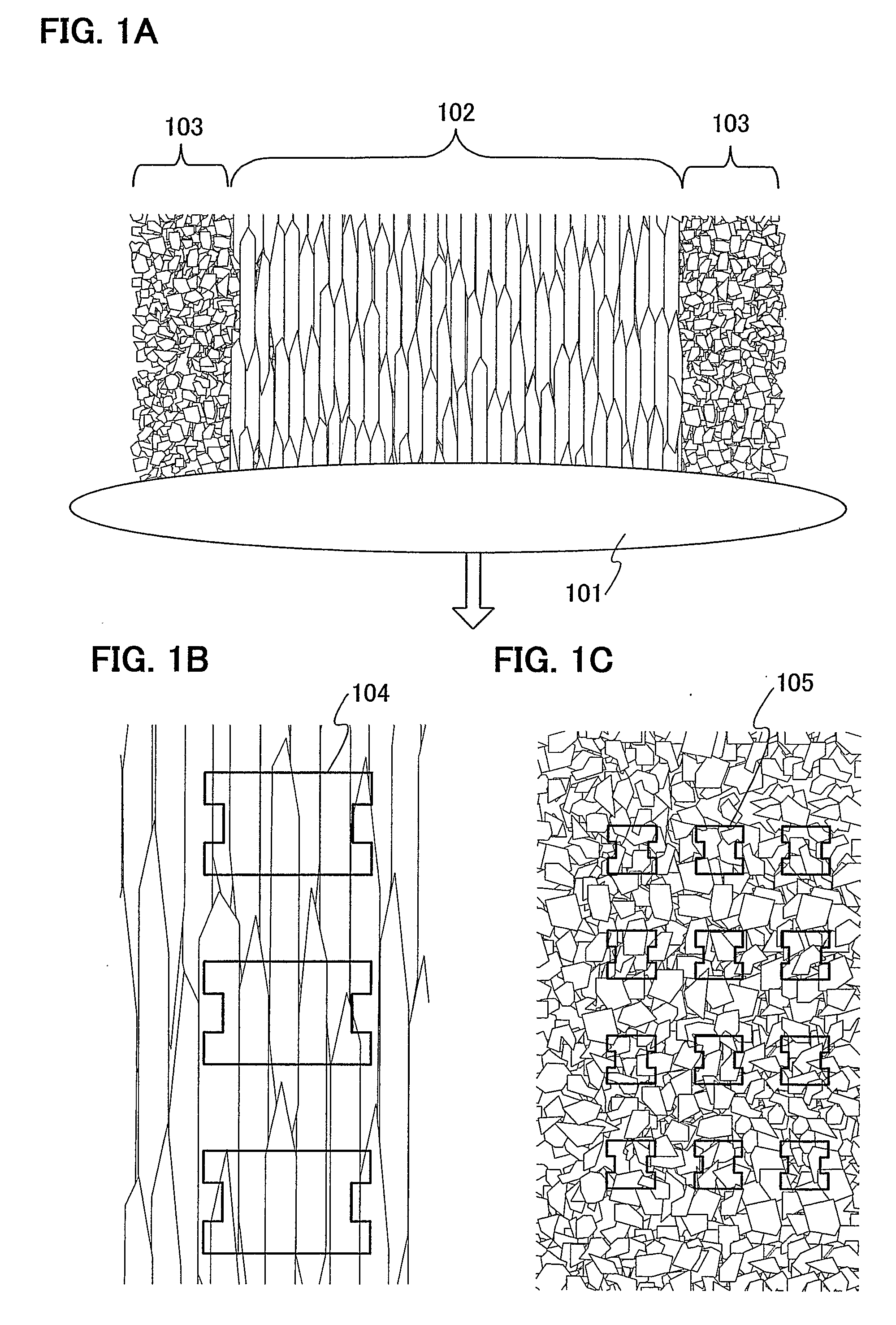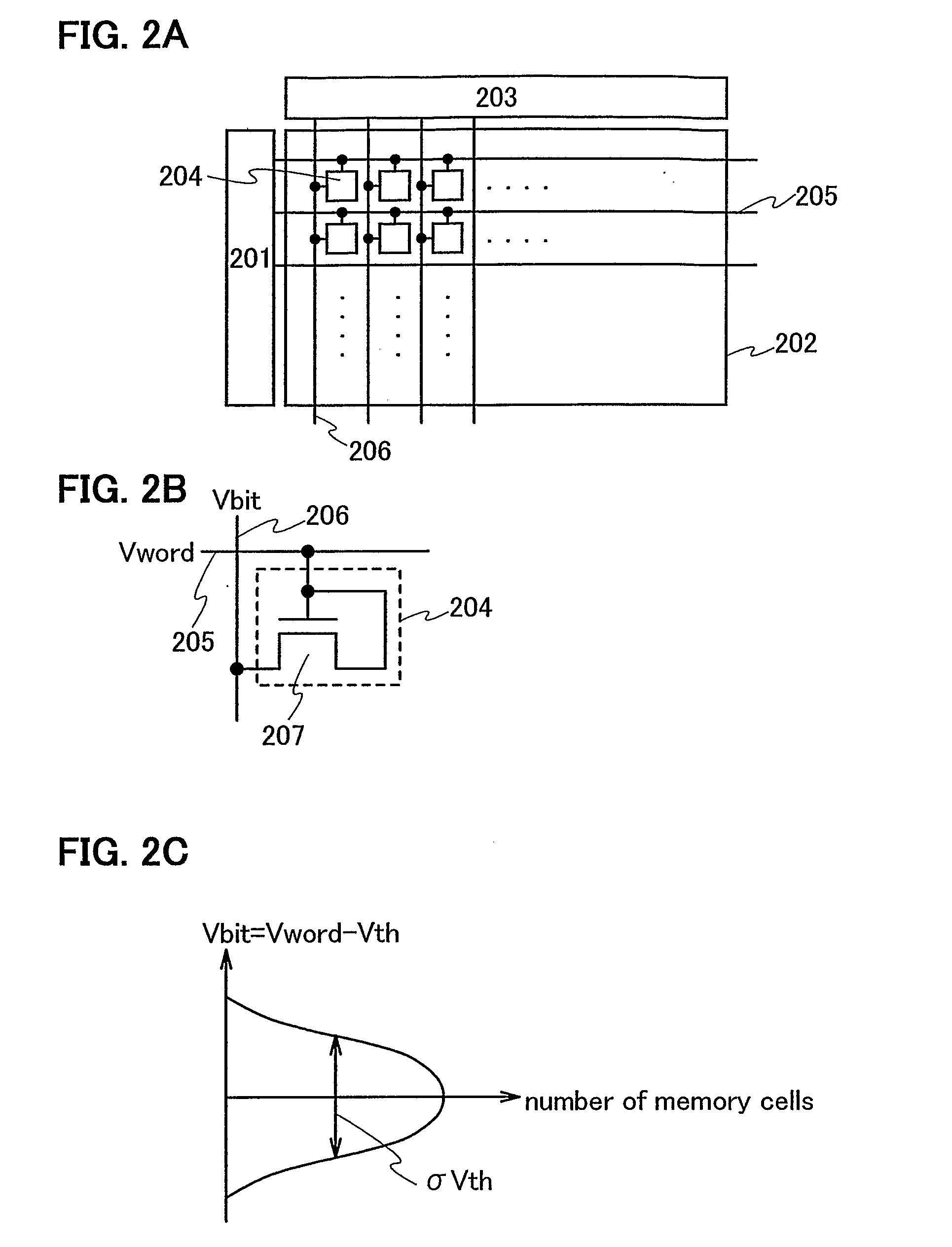Semiconductor device
a technology of semiconductor substrate and id chip, which is applied in the direction of solid-state devices, transistors, instruments, etc., can solve the problems of inability to reduce cost, inability to prevent forgery and deception, and inferior mechanical strength of flexible materials used as id chip base materials, so as to increase the mechanical strength of id chips and expand the versatility of id chips. , the effect of high mechanical strength
- Summary
- Abstract
- Description
- Claims
- Application Information
AI Technical Summary
Benefits of technology
Problems solved by technology
Method used
Image
Examples
embodiment 1
[0138] This embodiment describes an example of a readout circuit used in a random ROM. FIG. 9 shows an example of the random ROM including a memory cell array 801 and a readout circuit 802. It is noted that FIG. 9 shows a memory cell 803 in the memory cell array 801 and a part of the readout circuit 802 corresponding to the memory cell 803.
[0139] The readout circuit 802 has a reference memory cell 804, a differential amplifier circuit 805, and a latch circuit 806. When a word line 807 is selected, a voltage Vbit is supplied to the differential amplifier circuit 805 through a bit line 808 by the memory cell 803. On the other hand, the reference memory cell 804 outputs a reference voltage Vref, which is then supplied to the differential amplifier circuit 805. The difference between the voltage Vbit and the voltage Vref is amplified in the differential amplifier circuit 805 and the amplified voltage is stored in the latch circuit 806.
[0140] It is preferable that the reference voltage...
embodiment 2
[0145] With reference to FIG. 10, this embodiment describes a structure of a random ROM that is different from FIG. 9. While FIG. 9 illustrates the random ROM for determining data by comparing each memory cell with the reference memory cell, FIG. 10 illustrates a random ROM for determining the data by comparing the voltages between the adjacent memory cells.
[0146]FIG. 10 shows two memory cells 821 and 822 in a memory cell array 820 and a part of a readout circuit 823 corresponding to the memory cells 821 and 822. When the memory cells 821 and 822 in the memory cell array 820 are selected, voltages according to threshold voltages of TFTs 824 and 825 in the memory cells 821 and 822 respectively are supplied to corresponding bit lines 826 and 827. A differential amplifier circuit 828 in the readout circuit 823 amplifies the difference between voltages of the bit lines 826 and 827, and the amplified difference between voltages is stored in a latch circuit 829 in the readout circuit 823...
embodiment 3
[0148] In order for an ID chip to have the data that are unique enough to be identified, the ID chip may have a random ROM that can store low-capacity data. For example, the capacity of 128 bit is enough for the random ROM to store the data for identifying the ID chip. In the case of the low-capacity random ROM, a flip-flop circuit may be used.
[0149]FIG. 11 shows an example of the random ROM in this embodiment. As shown in FIG. 11, a readout circuit 840 in the random ROM of this embodiment has a shift register 841 and a switching element 842. Moreover, the shift register 841 has a flip-flop circuit 843.
[0150] When a load signal selects the switching element 842 in the memory cell array 844 of the random ROM, data from memory cells 845 and 846 are input into the shift register 841. When the data are input from the memory cells 845 and 846 into the shift register 841, the data are output serially in accordance with a clock signal (CLK).
[0151] An operation of the shift register 841 ...
PUM
 Login to View More
Login to View More Abstract
Description
Claims
Application Information
 Login to View More
Login to View More - R&D
- Intellectual Property
- Life Sciences
- Materials
- Tech Scout
- Unparalleled Data Quality
- Higher Quality Content
- 60% Fewer Hallucinations
Browse by: Latest US Patents, China's latest patents, Technical Efficacy Thesaurus, Application Domain, Technology Topic, Popular Technical Reports.
© 2025 PatSnap. All rights reserved.Legal|Privacy policy|Modern Slavery Act Transparency Statement|Sitemap|About US| Contact US: help@patsnap.com



